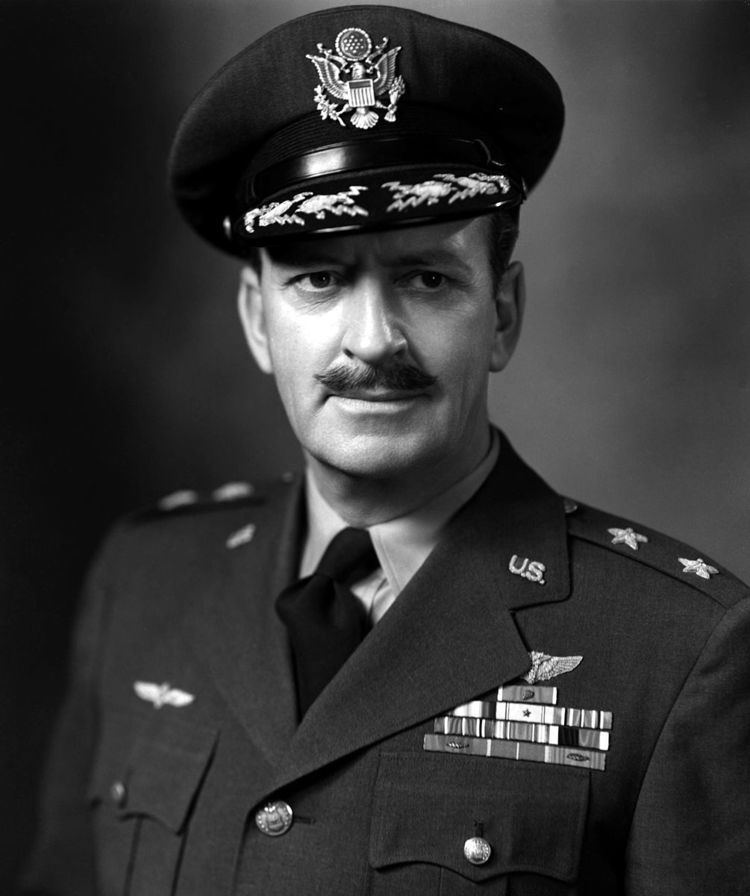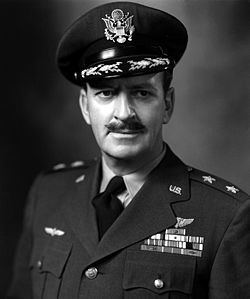Name Harry Armstrong | Died February 5, 1983 | |
 | ||
Allegiance United States of America Years of service 1918-1919 (Marine Corps)1925-1957 (Army/Air Force) Commands held Surgeon General of the Air Force Awards Distinguished Service MedalLegion of Merit (2)Order of the British EmpireCroix de GuerreCollier Award Books The Emerging Death Mystique: The Challenge and the Promise | ||
Harry George Armstrong (February 17, 1899 – February 5, 1983) was a Major General in the United States Air Force, a physician, and an airman. He is widely recognized as a pioneer in the field of aviation medicine. The "Armstrong Limit", the altitude above which water boils at the temperature of the human body, is named after him.
Contents

Armstrong served in the Marines during World War I and the Army and Air Force from 1930 to 1957. As Director of the United States Aeromedical Research Laboratory, he applied his medical and aviation knowledge to the improvement of aircrew protection from temperature extremes and the lack of oxygen at high altitude.
Biography
Armstrong was born in De Smet, South Dakota, in 1899. He attended the University of Minnesota, but left after one year to enlist in the US Marine Corps, serving with them as a private from October 1918 to March 1919. He then entered the University of South Dakota, graduating in 1921. In 1925 he received his Doctor of Medicine Degree from the University of Louisville. He entered the Medical Corps Reserve in April 1925. Armstrong entered the School of Aviation Medicine at Brooks Field, Texas, that September. Upon graduation in 1930, he was commissioned a first lieutenant in the Regular Army Medical Corps. In 1931, he was attached to the Air Corps and assigned as assistant surgeon. He was promoted to captain in 1932, to major in 1938, lieutenant colonel (temporary) in February 1942, and to colonel (temporary) in August 1942. Serving alternately in England and the United States, in 1945 he became surgeon for the Air Division in the office of Military Government for Germany (U.S.), with headquarters in Berlin. In 1946, he was promoted to lieutenant colonel (permanent), returned to the School of Aviation Medicine at Randolph Field upon appointment as Assistant Commandant, and that July was named Commandant. In 1948, he was promoted brigadier general (temporary), then to major general (temporary). In June 1949, he was assigned to Air Force headquarters at Washington, D.C., as Deputy Surgeon General of the U.S. Air Force, promoted to colonel (permanent) in October, and the following December was designated Surgeon General. Armstrong was promoted to brigadier general (permanent) October 9, 1951. In 1954, General Armstrong went to Wiesbaden, Germany, as Surgeon of the United States Air Forces in Europe.
Armstrong retired from the Air Force in 1957. He died in 1983 from heart disease.
In 1977, the Harry G. Armstrong Award for Scientific Excellence was created by the Air Force Aerospace Medical Research Laboratory.
Other awards
Published works
Armstrong published 105 scientific papers in the field of aviation medicine and aerospace medicine.
